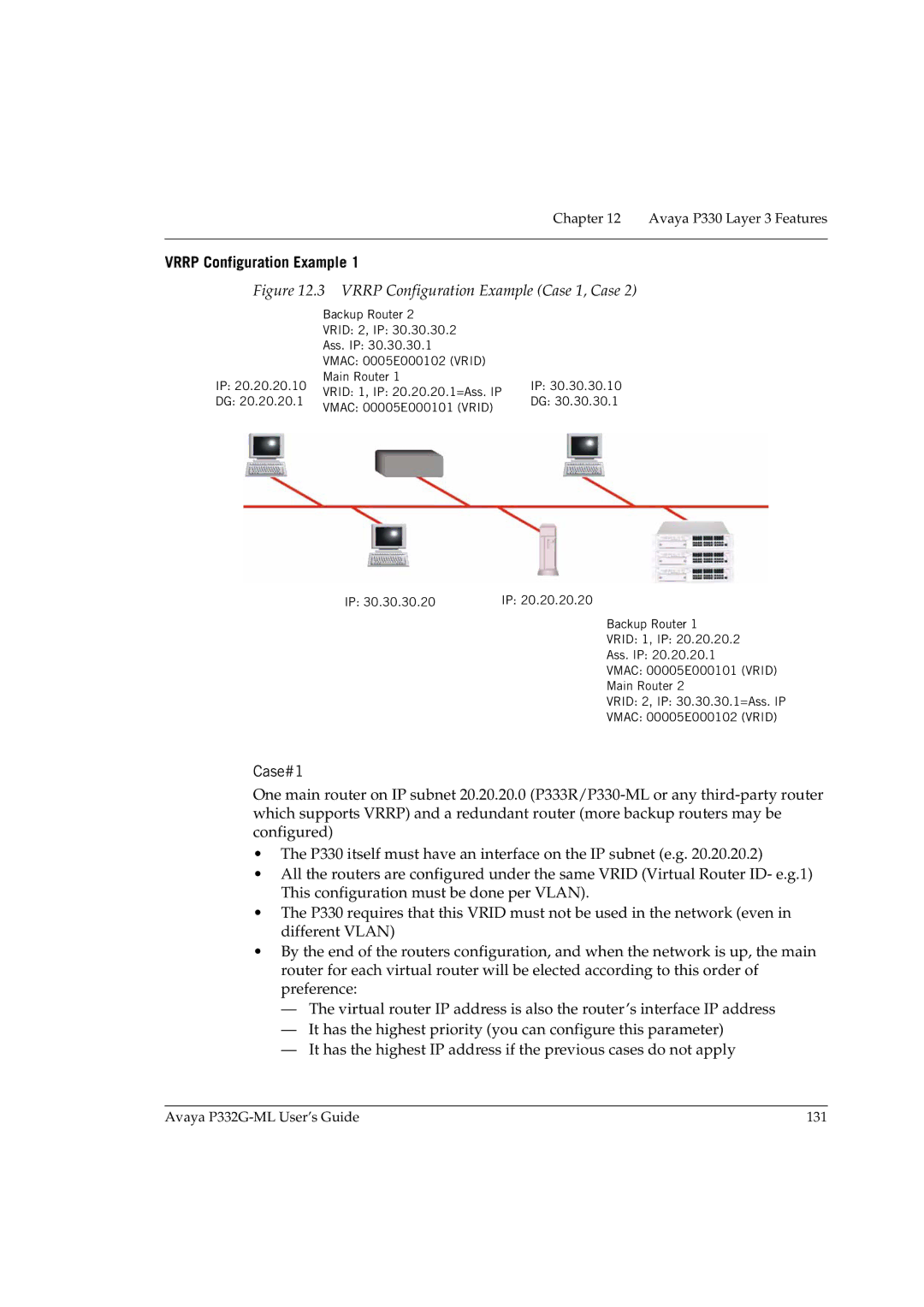
Chapter 12 Avaya P330 Layer 3 Features
VRRP Configuration Example 1
Figure 12.3 VRRP Configuration Example (Case 1, Case 2)
| Backup Router 2 |
| |
| VRID: 2, IP: 30.30.30.2 |
| |
| Ass. IP: 30.30.30.1 |
| |
| VMAC: 0005E000102 (VRID) |
| |
IP: 20.20.20.10 | Main Router 1 | IP: 30.30.30.10 | |
VRID: 1, IP: 20.20.20.1=Ass. IP | |||
DG: 20.20.20.1 | DG: 30.30.30.1 | ||
VMAC: 00005E000101 (VRID) | |||
|
|
IP: 30.30.30.20 | IP: 20.20.20.20 |
Backup Router 1
VRID: 1, IP: 20.20.20.2
Ass. IP: 20.20.20.1
VMAC: 00005E000101 (VRID)
Main Router 2
VRID: 2, IP: 30.30.30.1=Ass. IP
VMAC: 00005E000102 (VRID)
Case#1
One main router on IP subnet 20.20.20.0
•The P330 itself must have an interface on the IP subnet (e.g. 20.20.20.2)
•All the routers are configured under the same VRID (Virtual Router ID- e.g.1) This configuration must be done per VLAN).
•The P330 requires that this VRID must not be used in the network (even in different VLAN)
•By the end of the routers configuration, and when the network is up, the main router for each virtual router will be elected according to this order of preference:
—The virtual router IP address is also the router’s interface IP address
—It has the highest priority (you can configure this parameter)
—It has the highest IP address if the previous cases do not apply
Avaya | 131 |
